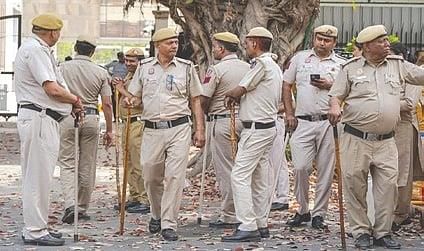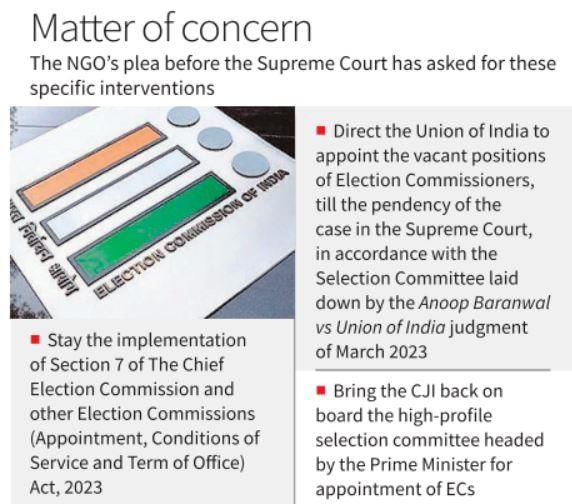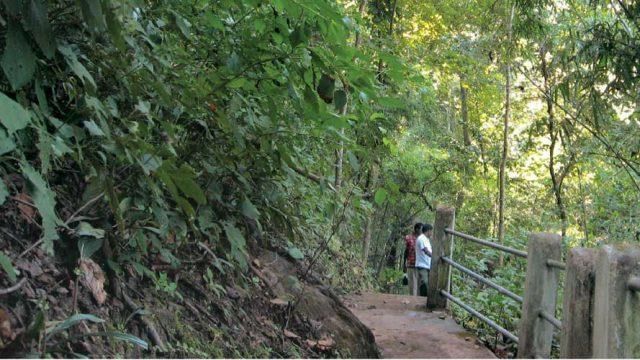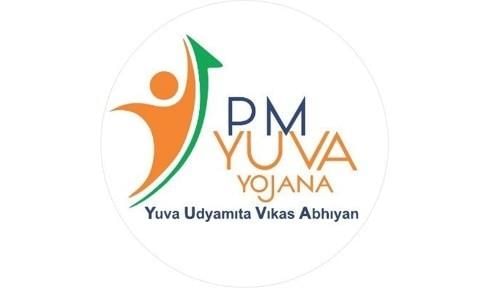UPSC Daily Current Affairs: 18th March 2025 | Current Affairs & Hindu Analysis: Daily, Weekly & Monthly PDF Download
GS3/Economy
Railway Accidents Down 90% Since 2005-2006
Why in News?
The Union Railway Minister Ashwini Vaishnaw recently addressed the Rajya Sabha, announcing that train accidents and derailments have significantly decreased by 90% compared to the 2005-06 period. This improvement highlights the effectiveness of safety measures implemented over the years.
- In 2005-06, there were 234 train accidents and 698 incidents, averaging two accidents per day.
- In 2024-25, the number of accidents has dropped to just 30, showing a remarkable decline.
Additional Details
- Safety Improvements: The implementation of stronger rails, electronic interlocking systems, fog safety devices, and the rollout of Kavach technology has contributed to enhanced safety.
- Weld failures have decreased by 92%, and rail fractures have reduced from 2,500 in 2013-14 to 250 in 2024, marking a 91% reduction.
- Employment Growth: The Railways has employed 500,000 people in the last decade, compared to 400,000 from 2004 to 2014, with current recruitment for an additional 100,000 employees.
- 18.4 lakh candidates appeared for loco pilot exams, with 2.32 crore candidates applying for various railway positions.
- Financial Recovery: The Indian Railways has generated a revenue of ₹2.78 lakh crore against expenses of ₹2.75 lakh crore, achieving financial stability post-Covid-19.
- Global Recognition: India ranks among the top three countries in cargo capacity, reaching 1.6 billion tonnes, alongside China and the USA.
- Modernization Efforts: Plans to replace all ICF coaches with LHB coaches and the production of 1,040 locomotives this year, surpassing outputs from the US and Europe.
- Affordable Travel: Railway fares in India are significantly lower than in neighboring countries and Western nations, with a 47% subsidy on passenger fares.
- Electrification Goals: Indian Railways aims for Scope 1 Net Zero by 2025 and Scope 2 Net Zero by 2030, maintaining stable energy costs despite rising demand.
The continuous efforts by the Indian Railways to improve safety, modernize infrastructure, and provide affordable travel options reflect a commitment to enhancing the overall railway experience for passengers while ensuring safety and efficiency.
GS2/Polity
Shishtachar Squad
 Why in News?
Why in News?
The Delhi Police has established district-specific anti-eve-teasing units known as the Shishtachar Squads to combat harassment and enhance the safety of women in public areas across the national capital.
- The Shishtachar Squad is an initiative by the Delhi Police aimed at improving women's safety.
- It draws inspiration from Uttar Pradesh's Anti-Romeo Squads, focusing on prevention and victim assistance.
- Each district will have at least two dedicated squads supervised by the ACP Crime Against Women cell.
Additional Details
- Composition:Each squad consists of:
- One inspector
- One sub-inspector
- Five male officers
- Four female officers
- Technical support from the Anti-Auto Theft Squad
- Area Identification: District DCPs will identify hotspots and vulnerable areas that pose risks to women's safety.
- Patrolling: The squads will patrol vulnerable areas and conduct operations at two identified points daily.
- Surprise Checks: Plain-clothed officers will perform surprise checks in public transport and encourage DTC staff to report harassment cases.
This initiative reflects a proactive approach by the Delhi Police to ensure women's safety and curb harassment in public spaces, demonstrating a commitment to creating a safer environment for all citizens.
GS2/International Relations
A Land Where Ambition Grows Minus an Outbound Ticket
Why in News?
The issue of migration highlights a defining aspect of human civilization, influencing societies and economies globally. Recently, the deportation of Indian migrants from the United States has brought attention to the complex realities of migration, raising questions about why so many Indians seek opportunities abroad despite India's economic growth.
- India has the largest number of emigrants in the world, with success stories overshadowed by the struggles of undocumented migrants.
- Economic growth in India coexists with rising unemployment and social disparity, contributing to the migration paradox.
- Migration is increasingly driven by the aspirations of not just the poor but also the affluent seeking better opportunities abroad.
Additional Details
- Indian Diaspora: Prominent figures like Sundar Pichai (CEO of Google) and Satya Nadella (CEO of Microsoft) symbolize India's intellectual success, yet thousands face challenges as undocumented migrants seeking economic stability.
- Economic Paradox: Despite impressive GDP growth, many Indians experience economic disparity and stagnant job creation, driving them to seek opportunities abroad.
- The American Dream: Once a beacon of hope, the journey to the U.S. often leads to low-paying jobs and a life of uncertainty for undocumented migrants.
In conclusion, India's future must focus on creating an environment where migration is a choice rather than a necessity. By fostering job creation, educational reform, and entrepreneurial opportunities, India can transform into a land where ambition flourishes without the need for an outbound ticket.
GS2/Polity
Electoral Reforms in India: Challenges and the Path Forward
 Why in News?
Why in News?
The Election Commission of India (ECI) has initiated discussions with political parties to enhance the integrity and transparency of the election process amidst growing concerns over electoral practices.
- Need for comprehensive electoral reforms due to allegations of electoral roll manipulation and EVM transparency issues.
- Current legal provisions governing elections are insufficient to address systemic flaws.
- Proposed reforms focus on enhancing voter verification, regulating election spending, and addressing the criminalization of politics.
Additional Details
- The Need for Electoral Reforms: Recent discussions have highlighted critical issues such as unregulated election expenditures, criminalization of politics, and violations of the Model Code of Conduct (MCC), emphasizing the importance of maintaining free and fair elections as a cornerstone of democracy.
- Legal Provisions: Key legislative frameworks include Article 324 of the Constitution, the Representation of the People Act, 1950 & 1951, and the Registration of Electors Rules, 1960, which govern electoral processes and voter registration.
- Concerns Over EVMs and VVPATs: Since 2004, EVMs have been the standard voting method, with a push for VVPAT systems. The Supreme Court mandated verification of 5% of EVMs in each constituency to ensure integrity.
- Electoral Roll Manipulation: Allegations of fake voters being added to electoral rolls have emerged, particularly in Maharashtra and Delhi, necessitating corrective actions by the ECI.
- Rising Election Expenditure: The 2024 Lok Sabha elections witnessed spending exceeding ₹1,00,000 crore, raising issues of corruption due to lack of spending limits on political parties.
- Criminalization of Politics: The ADR report indicated that 46% of Lok Sabha MPs have criminal cases, highlighting the need for stricter enforcement of transparency in candidate backgrounds.
- Proposed Electoral Reforms: Suggestions include enhancing EVM and VVPAT verification, linking Aadhaar to EPIC to prevent duplicate registrations, instituting spending caps for political parties, and empowering the ECI to enforce the Model Code of Conduct more stringently.
In conclusion, electoral reforms are crucial for reinforcing India's democratic framework. Although the ECI has made strides toward improving transparency and voter integrity, persistent challenges such as political corruption and excessive campaign spending remain. A comprehensive approach is essential to ensure elections are conducted fairly and transparently, necessitating collaborative efforts between political parties and the ECI.
GS3/Science and Technology
Celebrating Pi Day
Why in News?
On Pi Day, which is celebrated on March 14 every year, 10-year-old Alberto Davila Aragon from Bristol, UK, achieved a remarkable feat by recalling 280 decimal places of Pi in just one minute. This impressive accomplishment highlights the significance of Pi Day and its role in promoting mathematical knowledge and skills.
- Pi Day celebrates the mathematical constant Pi, represented by the symbol π.
- The theme for Pi Day 2025 is ‘Mathematics, Art, and Creativity’.
Additional Details
- History of Pi Day: Pi Day was first celebrated in 1988 by physicist Larry Shaw at the San Francisco Exploratorium. In 2009, the United States House of Representatives officially recognized March 14 as Pi Day. UNESCO later declared it the "International Day of Mathematics" in 2019.
- Why March 14? The date corresponds to 3/14, which matches the approximate value of Pi (3.14). This alignment makes it a fitting day to honor this essential mathematical constant.
- What is Pi (π)? Pi is the ratio of a circle's circumference to its diameter. It is an irrational number, meaning it has an infinite number of decimal places and does not repeat or terminate.
- Applications: Pi is widely used in various fields, including geometry, trigonometry, and calculus, for calculations involving circles and circular shapes.
In summary, Pi Day serves as a reminder of the beauty and importance of mathematics in our lives, inspiring future generations to engage with and appreciate this fundamental subject.
GS3/Environment
Kanger Valley National Park (KVNP)
 Why in News?
Why in News?
Kanger Valley National Park, situated in the historically Maoist-dominated area of Bastar district in Chhattisgarh, has recently been added to the tentative list of UNESCO World Heritage Sites under the 'Natural' category.
- Located in Jagdalpur, KVNP is named after the Kanger River that flows through it.
- Features diverse topography including low flatlands, steep inclines, and deep gorges.
- Home to the stunning Tirathgarh Falls, which cascades from a height of 150 feet.
- Contains over 15 limestone caves, including the well-known Kotumsar, Kailash, and Dandak caves.
Additional Details
- Flora: The park showcases a mix of moist deciduous forests, primarily featuring Sal, teak, and bamboo trees.
- Fauna: Major wildlife includes tigers, leopards, sambars, and various species of deer such as chital and barking deer. Notable aerial species consist of the common hill myna and red jungle fowl.
- Kanger River is a significant tributary of the Kolab River, contributing to the water system that ultimately feeds into the Godavari.
The recognition of Kanger Valley National Park as a UNESCO World Heritage Site underscores its ecological significance and the need for preservation efforts. This prestigious tag not only highlights the area's natural beauty but also promotes conservation awareness.
GS2/Governance
PM’s Scheme for Mentoring Young Authors (PM-YUVA 3.0)
 Why in News?
Why in News?
The Ministry of Education, through its Department of Higher Education, launched the PM-YUVA 3.0 (Prime Minister’s Scheme for Mentoring Young Authors) on 11th March 2025. This initiative builds upon the success of its earlier editions, which focused on significant themes such as the national movement and democracy.
- The scheme targets young authors under the age of 30.
- It aims to foster new writers exploring themes like the contribution of the Indian Diaspora in nation building, the Indian Knowledge System, and the makers of Modern India (1950-2025).
Additional Details
- Background: PM-YUVA 1.0 (2021) focused on India's National Movement and unsung heroes, while PM-YUVA 2.0 (2022) emphasized democracy and constitutional values. The initiative promotes a reading, writing, and book culture in India and showcases Indian literature globally.
- Implementing Agency: The National Book Trust (NBT), India, is responsible for executing the scheme.
- Alignment with NEP 2020: The scheme supports the National Education Policy (NEP) 2020, aiming to empower youth, develop creative leaders, and enhance capacity building in the younger generation of India.
Important Features of PM-YUVA 3.0
- An All-India Contest will run from 11 March 2025 to 10 April 2025 through MyGov.
- 50 authors will be selected across three themes.
- Evaluation of proposals will be completed by May-June 2025, followed by the announcement of selected authors.
- Each selected author will receive a monthly scholarship of ₹50,000 for six months, totaling ₹3 lakh.
- Authors will earn a 10% royalty on successful book publications.
- Books created under this scheme will be published and translated into other Indian languages, promoting literary exchange and supporting the vision of 'Ek Bharat Shreshtha Bharat'.
- Applicants who have qualified for previous editions of the scheme are not eligible for this edition.
This scheme represents a significant step towards nurturing the literary talents of young authors in India and contributing to the rich tapestry of Indian literature.
GS3/Environment
How Climate Change Affects India’s Wheat Production
Why in News?
This year, India has recorded its hottest February in 124 years, and the India Meteorological Department (IMD) has forecasted that March will experience even higher temperatures, leading to more days of extreme heat. Such climatic changes raise concerns about the impact on wheat production, particularly in major wheat-producing states.
- India's wheat production is significantly affected by rising temperatures, particularly in states like Punjab, Haryana, and Uttar Pradesh.
- Extreme heat during the wheat harvest season poses serious concerns for food security and the economy.
Additional Details
- Major Wheat-Producing States:
- Uttar Pradesh: The largest wheat producer, contributing about 31.77% of India's total output, with 35.34 million tonnes produced in 2023-24.
- Madhya Pradesh: The second-largest producer, accounting for approximately 20.98% of national output, producing 22.58 million tonnes.
- Punjab: Known as the "Granary of India," contributing around 13.87% with a production of about 17.74 million tonnes.
- Agro-Climatic Conditions: These states have cool winters and warm summers, ideal for wheat cultivation during the Rabi season (sown in November-December, harvested in March-April).
- Impact of Extreme Heat:
- Reduced Wheat Yield: Extreme heat accelerates ripening, leading to lighter grains and lower production.
- Lower Grain Quality: High temperatures can increase protein content but decrease starch accumulation, affecting milling quality.
- Economic Losses: Increased costs for irrigation and inputs due to heat stress lead to financial distress among farmers.
- Disruptions in Procurement: Lower production affects government procurement, impacting food security and trade.
In conclusion, the ongoing climate changes pose a significant threat to wheat production in India, which is crucial for the food security of millions. Policymakers need to implement strategies such as developing heat-resistant varieties and improving irrigation practices to mitigate these impacts.
GS2/Governance
Cancer Centre at District Hospitals
Why in News?
The Union Health Ministry has announced plans to establish cancer daycare centres in all district hospitals across India. Each centre is designed to provide chemotherapy, counseling services, and necessary medications, equipped with four to six beds. The staffing will include an oncologist or a trained medical officer, two nurses, a pharmacist, a counselor, and a multi-purpose worker. This initiative is highlighted in a recent report by the Parliamentary Standing Committee regarding the Ministry’s demand for grants.
- Projected cancer cases in India are expected to exceed 14 lakh by 2023.
- Approximately 100 per 1 lakh people are diagnosed with cancer each year.
Additional Details
- National Cancer Registry Programme (NCRP): Initiated by the ICMR in 1982 to track cancer trends for informed policymaking.
- Union Budget 2025-26: Allocated Rs. 99,858.5 crore for health initiatives, with a significant portion dedicated to cancer care.
- Day Care Cancer Centres: Plans to establish 200 centres in district hospitals during the 2025-26 financial year.
- Customs Duty Exemptions: 36 life-saving drugs, including cancer medications, are exempt from Basic Customs Duty (BCD).
- National Programme for Prevention and Control of Cancer (NPCDCS): This programme aims to combat cancer and other chronic diseases.
- Ayushman Bharat Yojana: Launched in 2018 to provide universal health coverage, including cancer treatment for economically vulnerable families.
- Health Minister’s Cancer Patient Fund (HMCPF): Offers financial assistance up to ₹5 lakh for cancer treatment to below-poverty-line patients.
- National Cancer Grid (NCG): Established in 2012 to standardize cancer care across India, serving over 750,000 new cancer patients annually.
- India’s First Indigenous CAR-T Cell Therapy - NexCAR19: Developed in April 2024, this treatment offers a cost-effective solution for blood cancers.
- Quad Cancer Moonshot Initiative: Launched in September 2024 to eliminate cervical cancer in the Indo-Pacific region.
- Expansion of ACTREC: Ongoing since January 2025 to improve cancer research and patient care.
The establishment of cancer daycare centres in district hospitals aims to enhance the accessibility and efficiency of chemotherapy treatment. This initiative targets the 764 district hospitals currently lacking such facilities, where patients will begin treatment at tertiary care centres and continue at these new daycare centres. The rollout of 200 centres is planned for this financial year, with full implementation projected over three years. However, there are concerns regarding staffing, as the government recommends utilizing existing staff despite recommendations for separate recruitment due to a shortage of healthcare professionals.
Experts support the initiative but emphasize the need for additional services, such as pain management and staff training in chemotherapy side effects. States with existing cancer care, like those in the Northeast and Kerala, may find implementation easier.
GS2/Polity
PM Internship Scheme
Why in News?
Recently, Union Minister Nirmala Sitharaman launched a dedicated mobile application for the Prime Minister Internship Scheme, encouraging more companies to participate in this initiative aimed at empowering the youth of India.
- The PM Internship Scheme is an initiative by the Indian government to provide internship opportunities for the youth.
- It targets young individuals aged 21-24 years from low-income households, offering 12-month internships in the top 500 companies of India.
- The pilot phase aims to engage 25 lakh youth, with a long-term goal of facilitating internships for one crore individuals over five years.
- Internships are available across 24 sectors, including oil, gas, energy, travel, hospitality, automotive, banking, and financial services.
Additional Details
- Eligibility Criteria:
- Must have passed 10th, 12th, ITI, Polytechnic, or Diploma courses.
- Fresh graduates from non-premier institutions are eligible.
- Individuals from households with an annual income of Rs.8 lakh or less qualify.
- Applicants must not have any family member employed in a government job.
- Exclusions: Students from prestigious institutes like IITs, IIMs, National Law Universities, and those holding professional degrees such as CA, MBA, or MBBS are excluded to enhance inclusivity for underrepresented groups.
- The program aims to bridge the divide between academic learning and practical experience, aligning with the government's broader vision for skill development and employment.
This initiative represents a significant step towards empowering the youth and fostering a skilled workforce in India.
GS3/Economy
RBI's Sarthi and Pravaah Initiatives
Why in News?
The Reserve Bank of India (RBI) has recently been awarded the UK's Digital Transformation Award 2025 in recognition of its innovative technological initiatives, specifically the Sarthi and Pravaah systems.
- The Sarthi system was launched in January 2023 to digitize RBI's internal workflows.
- The Pravaah system, introduced in May 2024, allows external users to submit regulatory applications digitally.
- RBI has experienced an 80% increase in monthly applications since the launch of Pravaah.
Additional Details
- Sarthi Initiative: This initiative, named after the Hindi word for ‘charioteer’, enhances internal document management by allowing employees to securely store and share documents. It improves record management and data analysis through comprehensive reports and dashboards. The initiative includes an online Sarthi Pathshala ('school') for user training, which was rolled out alongside extensive in-person training.
- Sarthi Mitras: These are designated individuals in each RBI office who are well-versed in the Sarthi system and provide assistance to colleagues facing challenges.
- Pravaah Initiative: This system, meaning ‘smooth flow’ in Hindi, builds on Sarthi's capabilities by facilitating the digital submission of regulatory applications by external users. It integrates seamlessly with the Sarthi database, improving processing efficiency within RBI offices.
- The digital infrastructure supported by centralized cybersecurity and tracking mechanisms has led to enhanced transparency and efficiency.
The introduction of Pravaah has streamlined the submission process and provided real-time tracking and analytics for both applicants and RBI managers, reducing delays associated with traditional paper-based methods. This significant achievement marks a crucial step in the RBI's digital evolution.
|
55 videos|5389 docs|1141 tests
|
FAQs on UPSC Daily Current Affairs: 18th March 2025 - Current Affairs & Hindu Analysis: Daily, Weekly & Monthly
| 1. What are the key reasons for the significant decrease in railway accidents in India since 2005-2006? |  |
| 2. How has the Shishtachar Squad contributed to railway safety? |  |
| 3. What initiatives has the Indian government taken to promote railway safety? |  |
| 4. What are the challenges faced in implementing further safety measures in the Indian railway system? |  |
| 5. How does climate change affect railway operations and safety in India? |  |





















